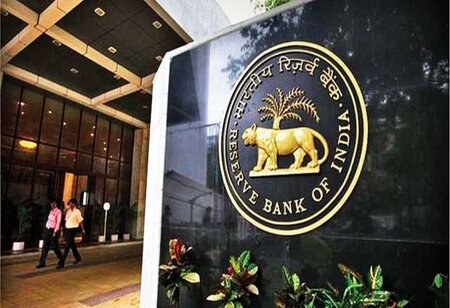Household debt soars to 37.1% of GDP, savings plunge 10.4% in Q2: shows RBI report
 The year-long pandemic left households more indebted, which has sharply jumped to 37.1 per cent of GDP in Q2 of FY21, while their savings rate plunged to a low 10.4 per cent, according to latest data which was from the Reserve Bank. The household savings plunged as the pandemic has led to tens of millions losing their jobs and almost all forced to take deep pay-cuts, which has forced them to borrow more or dip into their savings to meet expenses.
The year-long pandemic left households more indebted, which has sharply jumped to 37.1 per cent of GDP in Q2 of FY21, while their savings rate plunged to a low 10.4 per cent, according to latest data which was from the Reserve Bank. The household savings plunged as the pandemic has led to tens of millions losing their jobs and almost all forced to take deep pay-cuts, which has forced them to borrow more or dip into their savings to meet expenses.
This has the share of households in the overall credit market jumping to 51.5 per cent in Q2, up by 130 bps year-on-year. In a counter-seasonal manner, the pandemic-induced spike in the household financial savings rate in Q1 of FY21, when it had touched an unprecedented 21 per cent of GDP, has plunged to 10.4 per cent in Q2, the March issue of the RBI bulletin released over the weekend showed. However, this was still higher than 9.8 per cent registered in Q2 of FY20, the report said.
The RBI house economists said normally when the economy stalls or contract, household savings go up and when the economy recovers it falls as people become more confident of spending. In our case, the savings jumped to an unprecedented 21 per cent in Q1, when GDP contracted by a record 23.9 per cent, and when contraction moderated to 7.5 per cent in Q2, household savings plunged to 10.4 per cent.
In contrast, the bank advances at ₹102.7 lakh crore in Q2 rose just 20 bps on a quarter-on-quarter basis as against a contraction of 1.2 per cent in Q1, reflecting some pick-up in economic activity
"The inverse relation between the household savings rate and GDP growth may sound counter-intuitive, but studies have shown that households tend to save more during the economic slowdown and greater income uncertainty," the report argued.
A similar trend was also observed during the global financial crisis in 2008-09 when household savings jumped by 170 bps as per cent to GDP in FY09 and moderated subsequently as the economy picked up. But, the report warned that the household savings rate would have further gone down in Q3, citing preliminary numbers as a result of near normal consumption and economic activity.
"The household debt to GDP ratio, which has been steadily increasing since Q1 of FY19, has jumped sharply to 37.1 in Q2 of FY21 from 35.4 in Q1. There was also a significant pick-up in the share of household loans in the overall credit market, which increased by 1.3 bps to 51.5 per cent in Q2," as per the RBI bulletin.
While households' deposits and borrowings have also picked up, their holding of currency and savings in mutual funds has moderated, the report said, which has attributed the increased consumption, particularly its discretionary components, to a resumption in economic activity following the easing of lockdowns. The reversal in household financial savings is corroborated by the lower surplus in the current account balance.
According to the report, this indicates regression in the household savings rate to 10.4 per cent is closer to the pre-pandemic levels, mainly driven by the increase in household borrowings from banks and NBFCs, accompanied by a moderation in household financial assets in the form of mutual funds and currency in Q1, as due to the lockdown, households had no option to spend.
This is evident from the lower contraction in private final consumption expenditure as also the lower surplus in the current account in Q2. With overall consumption growth, the pace of contraction in private final consumption eased to 11.3 per cent in Q2 from the sharp contraction of 26.3 per cent in Q1.
But the report admitted that the plunge in savings in Q2 was counter-seasonal and reflected the impact of high base sequentially and a pick up in discretionary spending of households after the easing of lockdowns with a jump from pent up demand. In contrast, household savings reverted closer to the pre-pandemic levels in the country, partly due to the long festive season and pent-up demand.
The report also noted that although aggregate savings rose during the pandemic, it, however, might conceal the unequal impact in terms of household savings and consumption of non-essential items as several households in the unorganised sector suffered from job loss, income and borrowing opportunities. Moving forward, with the optimism on mass vaccination, household savings are expected to recede further to the pre-pandemic levels, the report said.
Also, there was a notable fall in household savings in the form of currency to 0.4 per cent of GDP in Q2 from 5.3 per cent in Q1. Similarly, household investment in mutual fund declined to 0.3 per cent from 1.7 per cent, while savings in insurance moderated to 3 per cent from 3.2 per cent in Q1. On the liabilities side, the share of household liabilities from banks and HFCs have come down, while that of NBFCs has increased from Q1.
On the other hand, aggregate bank deposits steadily rose and touched ₹142.6 lakh crore in Q2, an increase of ₹4 lakh crore since Q1. In contrast, the bank advances at ₹102.7 lakh crore in Q2 rose just 20 bps on a quarter-on-quarter basis as against a contraction of 1.2 per cent in Q1, reflecting some pick-up in economic activity.




